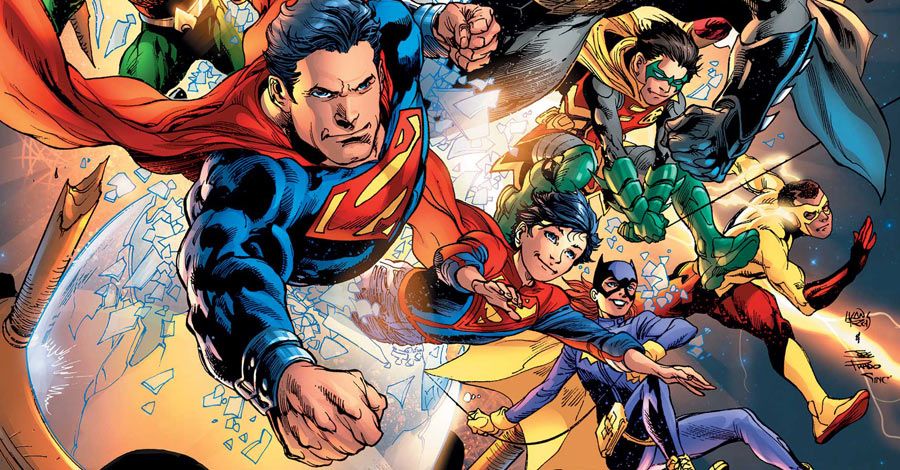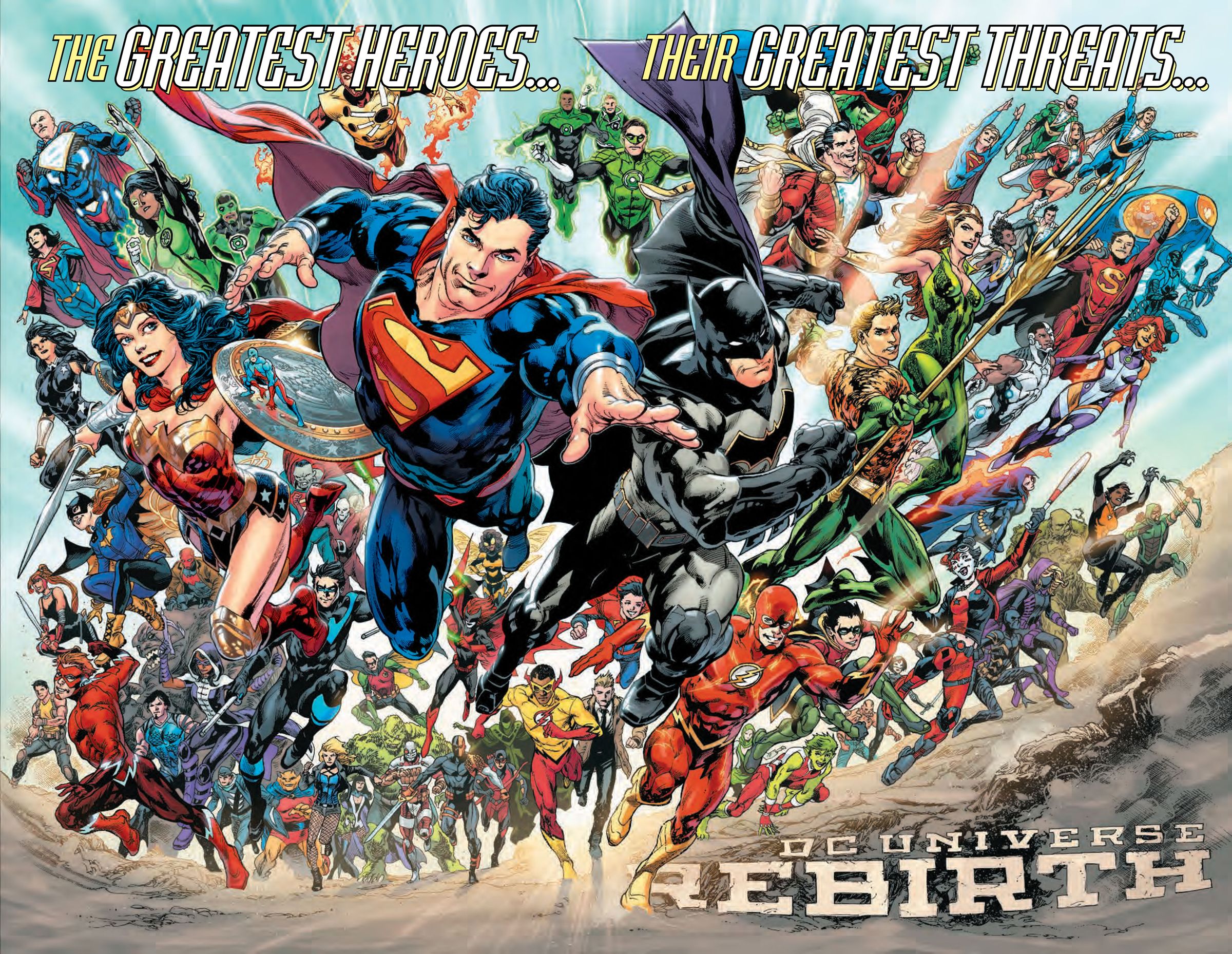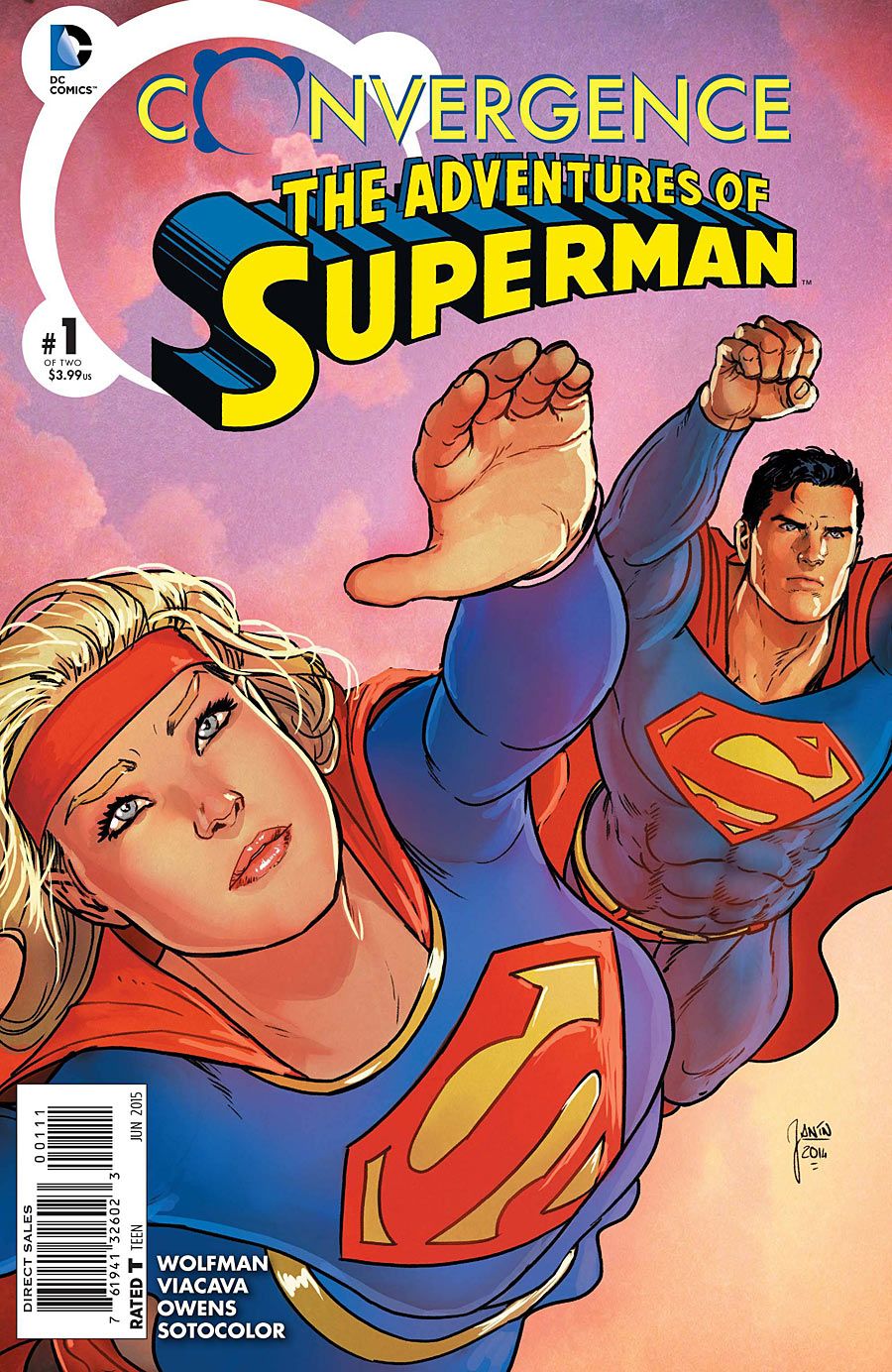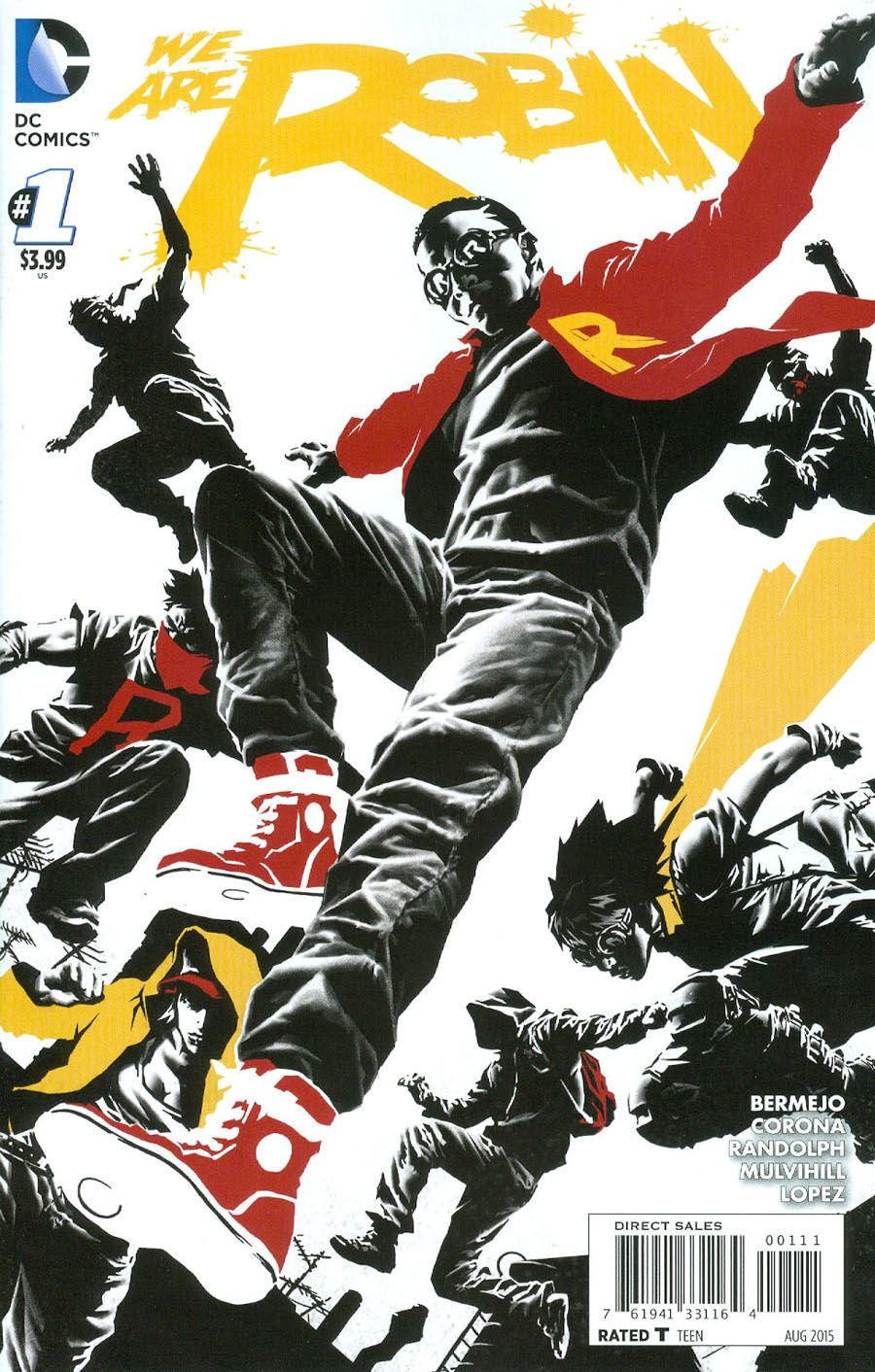DC's "Rebirth," Returnability, and Missing the Message
Here's the one solitary thing that comic book retailers have in common with the military: we tend to fight the last war.
This is how you explain the national sell-outs of the entirety of the first month worth of DC Comics' "Rebirth" comics.
Given that the "Rebirth" books were all returnable -- at no cost, and with no minimums or other hoops to jump through -- there should have been more than enough copies in the market to satisfy any possible demand. In fact, there probably should have been so many copies on the market that the books appeared to "flop" -- but either way there should have been zero problem meeting demand. I know in my stores we didn't have our first sellouts until we had at least two weeks of sales on the racks, and that we're very likely to be returning at least some copies of the vast majority of titles.
And yet, nationally, we're now at five straight weeks where every "Rebirth" title sold out, before release, and had to go back to press.
RELATED: The Mayo Report: "DC Universe: Rebirth" Could Have Sold Even More Copies
Now, we've already discussed the systemic problems as to why this bi-weekly shipping plan is probably not going to work in the medium-to-long term -- but how on earth did retailers as a class so badly misread what the potential short-term demand for "Rebirth" could have been? Virtually every retailer making that mistake possesses records going back to New 52 -- six years ago when DC last renumbered their line -- and, thus, also has the records showing where they sold out of those before release as well, necessitating 52 second printings of those 52 first issues!
How can they make that mistake twice?
Part of the answer is "Convergence" and "DC You." Both of those programs were commercial flops. And, as a class, we retailers fight the last war.
Put aside the thought that both of those programs bear very little resemblance to "Rebirth" -- Convergence was a poorly conceived band-aid of low-interest, two-issue miniseries that were designed purely for DC's cross-country move, while "DC You" was a package focusing mostly on B-list characters (and below) with a goal of "diversity," rather than (necessarily) of "good comics." "Rebirth," on the other hand, means new #1s for DC's biggest name characters -- you just can't make an equivalence between "Batman" #1 and "We Are Robin" #1; or between "Superman" #1 and "Convergence: Adventures of Superman" #1 (of 2).
And yet, as a class, retailers did exactly that -- many told me so directly.
I happen to be a fan of the way that the Direct Market orders comics -- partly because I (and a lot of smarter people) have spent decades trying to think of any way to replace it that would actually work better, and failed to come up with anything; and partly because I've grown comfortable with the rules, and I probably pay more attention to ordering comics than any other aspect of running my business, so I am usually able to "order to compensate" for my competitors' blind sights.
The main trick is to always remember that ordering comics, because of the never-ending weekly release schedule and monthly production schedule of most individual titles, ordering comics is virtually always a reactionary action -- in a sense, the core of our business is actually fighting the last war!
In the normal course of events, when I am ordering "Dweezleman" #8 at Final Order Cut-off, I will have had "Dweezleman" #6 on the shelves for five weeks, and #7 for one week. This means what I am actually doing when I am ordering #8 is writing down the number of copies of #6 I had wished I had ordered! If a sales trend is unusually pronounced (relatively rare) -- and by this I usually mean "if a book is dropping faster than I can cut it," though the reverse happens sometimes -- or if the first week sales on #7 are markedly different from #6; well, then I might try to "get ahead" of the curve -- but, as a rule, as our "muscle memory," we're always trying to perfect the previous order.
And, lest you forgot, there's a staggering number of comics being produced with low-to-no sales -- if you're selling low numbers across a line, rather than ordering in quantities that are growing individual titles, most of your effort is actually going to maintaining the status quo, or, worse, managing failure. Prior to "Rebirth," I was selling a pathetic two rack copies of titles like "Flash" and "Green Lantern" -- and this is with hundreds of non-subscription customers. At those kinds of numbers, there's really no plausible way to grow rack sales without an enormous risk on the part of the retailer.
This is a systemic problem for comics -- just take a look at any month's sales figures, and you can see that once you get past the first 75 or so best-sellers sales begin to rapidly scale down to 25K and lower, or into averages that drop below 10 copies per store -- and that's likely 2-3 rack copies for those titles.
Every month retailers are asked to order something silly like two thousand different new comics and graphic novels. The sheer scale of decision making that has to be made each and every month? Well, it's no real surprise that most retailers begin with falling back on that muscle memory of how to order, is it?
The problem with something like "Rebirth" is that the success of the marketing message ("We realized we went off track, and we're re-calibrating with what we intend to be a tonally different direction, and we're giving you clear jump-on points") renders all of that muscle memory essentially useless. There's essentially no way to order any of the "Rebirth" comics as the "next issue" of the title. In fact, even ordering programmatically (for example, saying "We'll order triple, across the board") probably won't come close to capturing your full sales potential because the number you're multiplying against is so small that your result will still be a generally insignificant number -- I knew we'd have the potential to sell 40-plus rack copies of even the poorest executed "Rebirth" title because of the strength of "We screwed up, baby, please come back" message, but if you say out loud "I want to order twenty times what 'Flash' is currently selling!" you're probably going to sound insane, even to yourself.
And yet, that's what the sale potential is -- I have at least five hundred potential customers coming in every week to buy comics (this is the reason why all of those 2s and 3s are just so so sad), thinking that 8-10% of them might be willing to check out "Flash" (especially if we can offer the customer the same full returnable promise that DC offered us!) isn't really that much of a reach.
I also want to be clear that there's a set of unique situations in play here because of that specific marketing message -- a relaunch like this is structurally different than, say, the seems-like-every-year renumbering that Marvel does. When you don't have a marketing message that isn't any different than "Hey new #1!" you're only going to spike sales by a percentage of the whole -- maybe 1.1 to 1.5x -- that also means you're not going to get any kind of substantive long-term bounce from that kind of renumbering (there's also a school of thought that I subscribe to that those kind of grasping for small bounces ultimately do more long-term harm than any good by making the audience weary) -- whereas doubling or tripling "Flash" sales when you're selling just two rack copies seems entirely possible.
But, in order to do that, the retailer has to be willing to try and hit that ball. The very structure of the Direct Market and the nature of muscle memory and fighting the last war might discourage stores from doing so, but, folks, fortune favors the bold -- especially when the first prints of the "Rebirth" material was entirely 100% returnable.
Brian Hibbs has owned and operated Comix Experience in San Francisco since 1989, was a founding member of the Board of Directors of ComicsPRO, has sat on the Board of the Comic Book Legal Defense Fund, and has been an Eisner Award judge. Feel free to e-mail him with any comments. You can purchase two collections of the first Tilting at Windmills (originally serialized in Comics Retailer magazine) published by IDW Publishing, as well as find an archive of pre-CBR installments right here. Brian is also available to consult for your publishing or retailing program..





